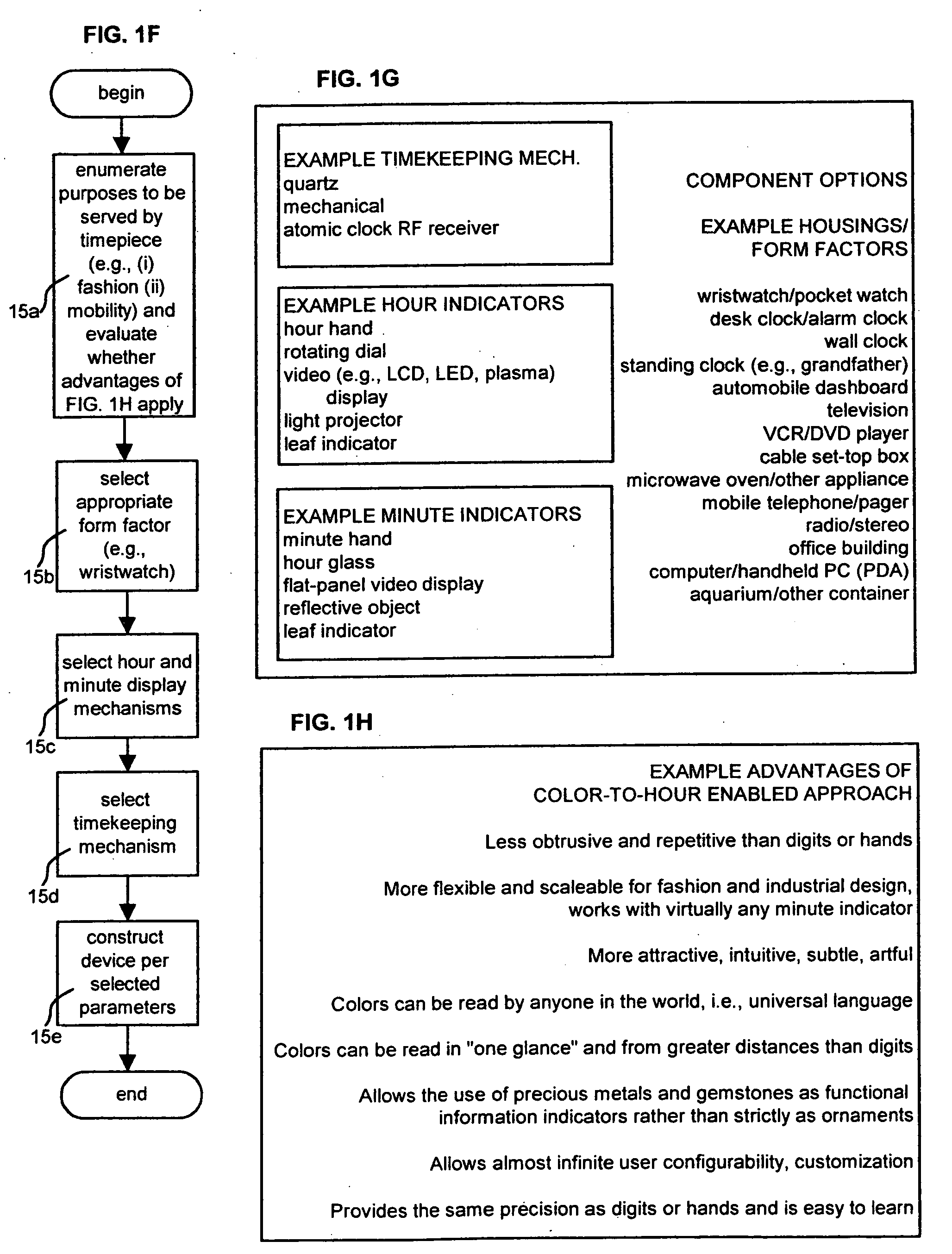Time display system, method and device
a time display and time display technology, applied in the field of clocks, watches, electronic displays, can solve the problems of affecting the fashion and ornamental function of modern clocks and watches, affecting the design of the time display system, and limiting design perspectives
- Summary
- Abstract
- Description
- Claims
- Application Information
AI Technical Summary
Benefits of technology
Problems solved by technology
Method used
Image
Examples
embodiment 30
[0150] This particular hybrid embodiment 30 enjoys an inherent advantage over devices that display the time in conventional digital format: as depicted in FIG. 3A, the device 30 conveys both minute and hour information using only two numerical digits. Conventional digital format, however, requires four numerical digits and a colon character, five symbols in all as depicted in FIG. 3B. Thus, holding the size of the electronic display constant, the two digits required in the time display mode depicted in FIG. 3A can be displayed at a greater size than the five symbols required in the time display mode depicted in FIG. 3B, and can therefore be read at greater distances. Moreover, color is demonstrably easier to discern from a distance than is an individual alphanumeric character.
[0151] The hybrid embodiment need not rely upon a flat-panel display. FIG. 4 depicts a color dial 40 with a multicolored surface; specifically, on the surface of this dial 40, twelve color segments 41 appear, e...
embodiment 360
[0238] The same basic mechanisms depicted above can be combined in a TDD that indicates the current zodiac month rather than the current calendar month. A color-to-month matrix 370 in which colors are assigned to zodiac months appears in FIG. 37. A rotating color dial embodying the color sequence of this color-to-month matrix 370 turns intermittently once per month at the top of the month, as in the previous embodiment 360, except that the top of the month is defined by the zodiac calendar, the pertinent dates of which are listed in FIG. 37. Thus, referring to FIG. 38, if the black color segment of a rotating color dial 385 is visible through the aperture 383 in the clock face 384, then the current month, according to the zodiac calendar, is Aries.
Section 8: Using Environmental Sensors to Toggle between Display Modes
[0239] Rather than require the user to manually switch the TDD from one display mode to another as per the process depicted in FIG. 3D, an environmental sensor can be ...
PUM
 Login to View More
Login to View More Abstract
Description
Claims
Application Information
 Login to View More
Login to View More - R&D
- Intellectual Property
- Life Sciences
- Materials
- Tech Scout
- Unparalleled Data Quality
- Higher Quality Content
- 60% Fewer Hallucinations
Browse by: Latest US Patents, China's latest patents, Technical Efficacy Thesaurus, Application Domain, Technology Topic, Popular Technical Reports.
© 2025 PatSnap. All rights reserved.Legal|Privacy policy|Modern Slavery Act Transparency Statement|Sitemap|About US| Contact US: help@patsnap.com



